The Origin of Our Psalm Melodies
The Origin of Our Psalm Melodies
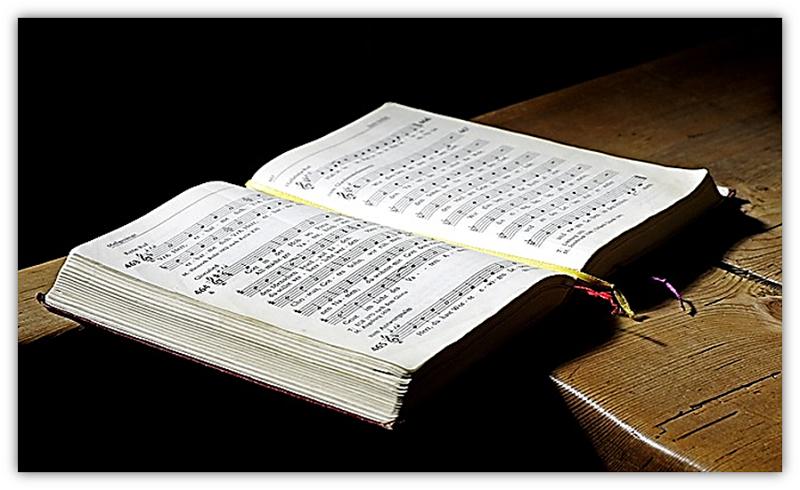
John Calvin⤒🔗
During a long time in the middle ages, the people of the Church did not sing in the public worship services. It was John Calvin who rediscovered the book of Psalms for the people of the Church and who transferred the singing in the Church from the clergy to the Church as a whole. The reformer of Geneva taught the Church again to sing her Psalms.
In the year 1537, still during Calvin's first stay in Geneva, the reformer proposed to the Council of the city the introduction of the singing of Psalms by the whole congregation, "in order to lift up our hearts unto God and to exalt His Name by songs of praise." But the Council of Geneva rejected Calvin's proposal. They did not consider the time to be ripe for such a radical change.
But in Strasbourg the victory began! In 1538 Calvin was banished from Geneva to this city, and already in the following year he had a small book of Psalms printed; it contained 19 Psalms in a rhymed version, together with the Song of Simeon, the Ten Commandments, and the Apostles' Creed. The rhymed versions of 13 of these 19 Psalms were made by Clement Marot, servant and court poet of King Francis I of France, a man who had great talents. The other six rhymed versions were made by Calvin himself. The melodies to which these 19 Psalms and 3 Hymns were sung originated mostly from Matthias Greiter at Strasbourg. These melodies disappeared later on from the Book of Praise; the well-known melody of Psalm 68 (the same as of Psalm 36) is the only melody from Greiter's hand, which is maintained in the Book of Praise. He was also the composer of the melody of the Apostles' Creed, the unrhymed version of the Twelve Articles. In the Dutch Book of Praise it is now Hymn 4.
In Strasbourg the basis of our singing of Psalms was actually laid.
From Strasbourg to Geneva←⤒🔗
In 1542 Marot published another 30 Psalms. The rhymed versions of John Calvin were revised. When Calvin was back in Geneva, 49 Psalms could soon be published. Unfortunately, the cooperation between Calvin and Marot did not last very long. In the same year Clement Marot left Geneva, and he died in Turin in the year 1544. He did not feel at ease with Calvinism.
At that time only a third part of the book of Psalms was finished in a rhymed version. In Geneva many were strongly convinced that this work had to be continued, but the difficulty was: who was willing and able to finish this work? Calvin did not consider his own poetical talents to be very great. In later editions, Calvin's own rhymings are missing. The reformer started this work and promoted and stimulated it, but he was too modest to promote his own work in this respect.
In 1548 he once visited Theodorus Beza. This young man (29) had been converted to the reformation in that same year and had come to Geneva. Calvin did not find Beza at home, but on his desk he discovered a draft of a rhymed version of Psalm 16. It appeared that Beza had started on his own to rhyme Psalms. Historians mention the fact that Beza, after he for the first time attended the public worship service in Geneva, was so impressed with the singing of Psalms that very soon he started to rhyme Psalms himself.
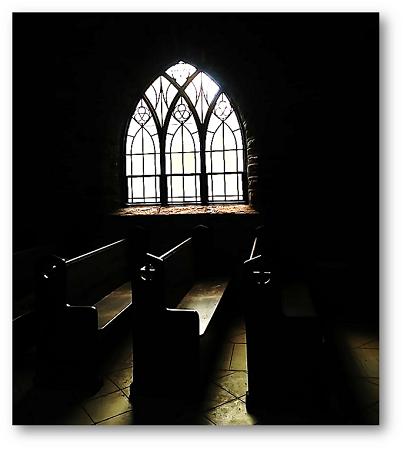
Calvin took the paper with him and showed it to the other ministers, who immediately became enthusiastic. Therefore Beza received the request to finish the work of Marot. That did indeed happen: in 1551 "Thirty-four Psalms of David by Theodorus Beza" were published, and in the following year they were published together with the 49 Psalms mentioned earlier.
Behind the edition of 1551 there was not only the pressure of the congregation of Geneva to finish the reformed Psalter. In Lausanne, where Beza had become a professor, lived Guillaume Franc, who was very much interested in the rhymed Psalter and who had urged Beza more than once to give priority to the work of rhyming the Psalms. But after 1551 the work stopped more or less. In the following four years only six Psalms were done, while in the years which then followed only one Psalm was added.
When in 1559 in Geneva the academy was established and Beza had moved in because he received an appointment as professor there, 60 Psalms were still to be rhymed. He was urged from all sides to finish the work, and he did indeed complete it in a short time. He did not do it as a kind of hobby or by poetic impulse. He considered the work that Marot had started to be a duty. He felt himself compelled to do it and accepted responsibility for the task that was given to him. In 1561 he finished the whole project. The day after Christmas 1561 permission to print the complete Psalter was received from Paris. On the same day the Paris priests rang the bells of the Church of Saint Merardus in order to disturb the public worship of the reformed people who were gathered together in the neighbourhood.
That caused a struggle. The parliament seized the occasion to hang three reformed men. Even the guard officer who had protected the reformed men against the attackers were sentenced to death. It was a difficult time, filled with enmity against the reformed people. But Beza nevertheless received the printer's privilege or permission to publish the complete Psalter. He was not dependent on the Paris parliament. With the support of the French court, the young king, his mother, and many others, he was able, in the spring of 1562, to introduce the complete Psalter also among the people of France.
The development and the growth of the Psalter took altogether a period of more than twenty years. The many editions of fragmentary Psalters point to the fact that the singing of Psalms started already very early in the reformed public worship services. It was not delayed until the Psalter was completed.
Melodies←⤒🔗
Already the first edition of Strasbourg, 1539, was supplied with melodies. We have already mentioned the name of Matthias Greiter, who composed several melodies, e.g. the melody of Psalm 119, which was used by Calvin for his rhymed version of Psalm 36, while Beza later on used this melody also for his rhymed version of Psalm 68.
Almost all other melodies originated in France. The composer of most of them was Louis Bourgeois, a cantor at the Church of Saint Pierre in Geneva; he had been attracted by John Calvin himself to work on the Psalms. Louis Bourgeois composed melodies on the so-called church modes.
The melodies are of an extremely high quality. As for the church modes, already in that time they had a very long history. Thus it is absolutely not true that the Psalm melodies were based on street songs of that time or on airs and tunes which were popular then. For many decades this theory has been repeated, but it is totally wrong. In a next article we hope to work this out.
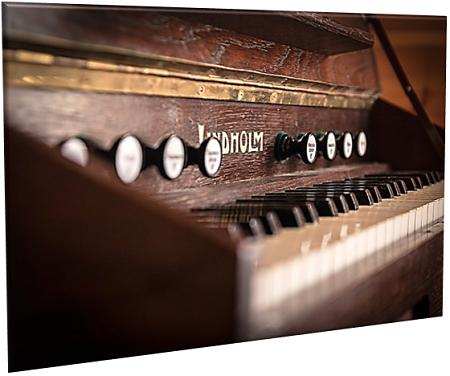
Louis Bourgeois←⤒🔗
In my former article I mentioned the name of Louis Bourgeois, a musician who was attracted by Calvin himself in order to compose melodies for the rhymed Psalms. He came to Geneva in 1541 and already in 1542 he published some melodies, and they were followed by many more in the years which followed. Besides him also a certain Guillaume Franc worked in Lausanne until 1552. Bourgeois refashioned old melodies which belonged to the rhymed Psalms of Marot and arranged new ones for Beza. But in Lausanne the old Marot melodies were preserved and for the Beza Psalms the melodies of Franc were chosen. In the end the Psalter of Geneva was preferred to the melodies of Lausanne. It is not sure whether Louis Bourgeois was also the composer of the 34 Psalms which Beza had rhymed and which were published in 1551. In this respect also the name of Francois Gindron is mentioned, who also composed melodies to spiritual songs written by Beza. In that time Beza lived in Lausanne, where Gindron was a cantor.
It is remarkable that there were already at that time Reformed hymns. They had of course nothing to do with the so-called evangelical hymns which played a role in the 18th and 19th centuries. These reformed hymns (also called Cantica) were directly derived from the Scriptures and were set to music on beautiful melodies in the church modes. It is certain that Louis Bourgeois composed many melodies which are of a very high quality.
But these things did not happen without any troubles. Besides financial difficulties there was discord more than once. It is said that Bourgeois had left Geneva in 1557 because Calvin had forbidden him to introduce four-part singing in the public worship services. But there is no proof for this. Although Calvin was not in favour of four-part singing in public worship, it is certain that he helped Bourgeois in the publication of four-part compositions.
At any rate, Louis Bourgeois did not finish the melodies of the Psalter. At the time of his departure, 81 Psalms had received a melody. Somewhere he himself writes that one must not conclude that all the Psalms melodies were composed by him.
After his departure a certain "Maître Pierre" delivered 40 melodies. Until now it is not clear who this cantor actually was. Neither is it cleared up until now whether this man was a composer or whether he just copied melodies from other sources.
Doubles←⤒🔗
But apart from this work of Maître Pierre, each Psalm had not yet received its own melody. The rest of the Psalms were sung to the existing melodies of other Psalms. The reason was the desire to finish the whole Psalter in a hurry: the work had already extended over several decades and not enough time had been allowed for the composition of new melodies. That is the reason why up to now 15 Psalm melodies occur twice (5+64, 14+53, 18+144, 28+109, 31+71, 33+67, 36+68, 46+82, 51+69, 60+108, 65+72, 74+116, 77+86, 78+90, and 117+127).
But there are also four Psalm melodies which occur three times (17+63 +70, 30+76+139, 66+98+118 and 100+131+142).
One melody even occurs four times (24+62+95+111).
The melody of Psalm 140 is also used for the Decalogue (Hymn 7 in the Canadian Reformed Book of Praise). Other Genevan melodies are those of Hymn 13 (the Song of Mary) and Hymn 18 (the Song of Simeon), while the Song of Zechariah (Hymn 14) originates from Strasbourg (1525).
Several other Hymns in the Book of Praise have also a Genevan Psalm melody: Hymn 2+27 (= Psalm 89), Hymn 6 (= Psalm 134), Hymn 11 (= Psalm 42), Hymn 21 (= Psalm 22), Hymn 22 (= Psalm 54 + one line added), Hymn 44 (= Psalm 85), Hymn 49 (= Psalm 56), Hymn 53 (= Psalm 66, 98, 118), and Hymn 58 (= Psalm 124).
It is regrettable that several beautiful melodies of Beza's Hymns have been relegated to oblivion. (I mentioned that in Thesis XII, in my dissertation Annus Liturgicus? 1975.)
Already in 1968 (Lucerna, VII, 3) I wrote,
It is very desirable that Calvin's heritage in the Genevan Psalter be preserved; in case of a new rhymed version, let the rediscovered but not yet used existing melodies be introduced for the doubles of rhymed Psalms, and if possible let such melodies also be used in case of a revision of the book of Hymns.
It has not been done, but I myself used the beautiful melody of one of Beza's Hymns in my book of songs, Kom, zing en speel (Groningen, 1979).
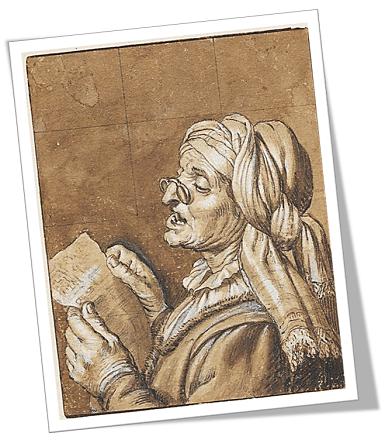
No Popular Songs and Street Songs!←⤒🔗
The Psalm melodies have a very long history. But it is strange that repeatedly a connection has been sought between Psalm melodies and street songs.
In his extensive work Kerkelyke Historie van het Psalm-Gezang der Christenen (Amsterdam, I, 1777; II, 1778), the minister of the church at Veere, Josua van Iperen, stated that the Psalms of Marot and Beza were originally sung to popular tunes and street songs, but that not until the year 1556 Louis Bourgeois was asked to compose other melodies. But in the light of the facts which I mentioned already, this statement appears to be absolutely wrong.
But here for the first time terms like "popular tunes" and "street songs" were used. Just a century later, the Frenchman Orentin Douen likewise used these terms in another two-volume work, Clement Marot et le Psautier Huguenot, étude historique, musicale et bibliographique, contenant See melodies primitives des Psaumes, et des spécimens d'harmonie (Paris, 1,1878; II, 1879). This work is even more extensive than the work of Van Iperen; Van Iperen's work counts 1015 pages, but Douen's work no fewer than 1461 pages!
Douen stated that many melodies of the Genevan Psalter had been borrowed from folk tunes and "top-hits" of that time. This statement was pronounced with great authority, but if one examines the "proof" which Douen tried to give, it must be said that he presents something which only resembles it. Nevertheless, Douen's statement has been repeated and accepted by many writers for a long time. I do not want to list all the names of even famous authors who repeated O. Douen's words, but it is remarkable that even a great liturgist such as G. van der Leeuw could write in his Beknopte Geschiedenis van het Kerklied (Groningen/Batavia, 1939),
The Psalm melodies, just as we know them now, are popular tunes and dance-songs. The main part of it consists of contra-facts. But from the light tunes which were as such very often not that nice, were made beautiful melodies for the church.
But at least for two reasons it would be impossible that John Calvin worked in that way.
-
In the first place, Calvin always stressed that there must be a close connection between the words and the melodies in singing. Therefore he said time and again that our singing in church was not to be "light and frivolous," but "worthy and majestic." Calvin had a great aversion to all kinds of street-ballads, which made the people only licentious, as he said.
-
In the second place, Calvin always went back to the church of former ages, especially to the early church. He never wanted to break with the church of the ages. On the contrary, he wanted to preserve the continuity of the church. Thus also for this reason it is very unlikely that he consented to the use of contemporary "top-hits" as Psalm melodies.
Simple, Not Artificial←⤒🔗
But Calvin's aim was to give the singing in the church back to the congregation. How would that be possible? In Reformation times the singing in the church was limited to the priests, with their Gregorian chants. But these church songs were too difficult for the common people of the church. They were too artificial for untrained singers. Calvin considered that the common people would never be able to sing in the church all the notes of the Gregorian chants, which were often quite aristocratic and luxurious, although very different from the "top-hits" of the day.
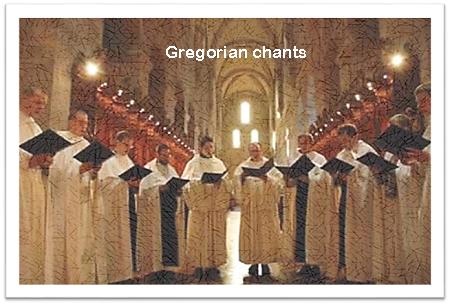
But in Strasbourg Calvin heard rhymed hymns in the German language, and they fascinated him. Then he rediscovered, as it were, the book of Psalms, and he wanted to make it accessible to the common people of the church. He sought a style that was proper to the church, but not artificial. Therefore, Calvin often used in this respect the word "moderate." In his writings about church music actually this word has a threefold meaning. This "moderation" stands in the first place over against the abundance of the Gregorian chants, but Calvin used this word also over against a very frequent use of music in the church. The singing of the congregation was to have a place in public worship, but not the first and the main place. But, thirdly, Calvin used this word also over against a kind of agitation and excitement in singing. Hence the expression "worthy and majestic."
Calvin promoted simple singing in the church, not in the sense of vulgar singing, but as a kind of singing which could be done by the whole congregation.
In the meantime, he also sought to continue the tradition of the church, as far as possible.
Did he succeed? Indeed, the Psalm melodies, which nowadays are esteemed very highly everywhere, meet these requirements, and the whole so-called contrafact-theory is proved to be a fantasy.
Emmanuel Haein←⤒🔗
Almost half a century after the publication of O. Douen's work, another Frenchman delivered an important thesis, Le Problème du Chant Choral dans les Eglises Réformées et le Trésor liturgique de la Cantilène huguenote. This thesis was submitted in 1926 to the Faculté de Théologie Protestante of Montpellier. Haein discovered that there is a close connection between the Genevan Psalm melodies and what he called several "timbres" and "nômes" of Gregorian chants and medieval church hymns.
That was a very remarkable discovery. It dismantled the theory of O. Douen and led the investigation further back to the history of the church.
Further Inquiries←⤒🔗
We saw that Emmanuel Haein in his thesis dated 1926 showed that there was a connection between the melodies of the Genevan Psalter and the Gregorian chants and medieval church hymns. Of course they were not the same, and the Gregorian chants were also deprived of their exuberance that had been developed in course of time. But special motives, called by Haein "timbres" and "nômes" come back in the Psalm melodies, just as they were used in medieval singing.
In this respect the development agrees with Calvin's principle that he did not want to break with the church of the ages.
But there is more. In 1929 a study was published by Abraham Zebi Idelsohn, titled Jewish Music in its Historical Development.
Idelsohn studied the Jewish way of singing in the synagogue, especially the way of singing Psalms. He discovered that there was throughout the ages a remarkable consistence in the way of singing, in spite of the isolation and separation of synagogues outside the Palestine land. He discovered also that there is a remarkable connection between the singing of Psalms in the synagogues and in the Christian churches.
Furthermore, Peter Gradenwitz delivered another study, called The Music of Israel: Its Rise and Growth through 5000 Years. He furnished sufficient material to continue the investigations of Haein going back to the synagogical songs, but also to the temple chants.
The remarkable conclusion is then that, as far as the origin of the Genevan Psalm melodies is concerned, these tunes can be traced back even to the period of revelation.
In his very extensive work of almost 2000 pages, the late Rev. H. Hasper worked that out in his two volumes Calvijns beginsel voor de zang in de eredienst, I, ('s Gravenhage, 1955) and II ('s Gravenhage/Groningen, 1976).

Hasper brought many arguments together and on the basis of the explorations by Haein, Idelsohn and Gradenwitz and by combining the data brought to light by them, he came to totally different conclusions from those of Douen. There must have been a very long tradition in the way of singing Psalms, especially via the church modes.
Pierre Pidoux←⤒🔗
Between the publication of the two volumes of Hasper, another important study was published, namely that of Pierre Pidoux, Le Psautier Huguenot, I Les Melodies, II Documents et Bibliographie (Basel, 1962).
Pidoux looked for the sources of the Psalm melodies of the Genevan Psalter and published many documents which are important in discovering the origin of the Psalm melodies. Time and again his conclusions go in the same direction as those of other contemporary investigations. He proved that in many cases the Psalm melodies were derived from hymns of the Antiphonarium and the Gradual, two books consisting of Gregorian chants. Remarkable is his discovery that not only the melodies of Geneva, but also those of Strausbourg go back to that sources.
S.J. Lenselink←⤒🔗
A couple of years before Pidoux's study, S.J. Lenselink wrote a dissertation, called De Nederlandse Psalmberijmingen van de Souterliedekens tot Datheen, met hun voorgangers in Duitsland en Frankrijk (Assen, 1959), and some years after Pidoux's study but in connection with this, he wrote his book Les Psaumes de Clément Marot (Assen/Kassel, 1969).
He writes that although there is not always a sharp distinction to be made between worldly and church music in that time, it is certain that there is a very close connection between many Psalm melodies of the Genevan Psalter and the Gregorian chants. But characteristic of the Genevan melodies, more or less over against the popular songs, is their absolute syllabical structure.
So also Lenselink pointed out that the origin of the Psalm melodies is to be found in the medieval hymns and especially in the Gregorian way of singing.
Church Modes←⤒🔗
That brings us to the matter of the so-called church modes, which are characteristic of the Gregorian chants and which are also used for the Genevan tunes. What are these church modes? In the "Notes on the Genevan tunes" (cf. the Book of Praise of the Canadian Reformed Churches, p. VII ff.) it is mentioned that in the Genevan Psalter nine different modes are represented: Dorian, Hypodorian, Phrygian, Mixolydian, Hypomixolydian, Aeolian, Hypoaeolian, Ionian and Hypoionian.
These names come from Greece. The Greeks first used tone series of four tones (tetrachords) and called them modes. Each area, people or city (Phrygia, Lydia, Ionia) used its own specific order of tones or steps. These developed into tone systems of seven steps or intervals to fill a so-called octave. An octave is the distance between a male voice and a female voice singing the same note. The natural difference in tone is called the eight-step or rather the octave interval. This distance is usually filled with seven whole and half steps to fill the space of twelve semitones. The arrangement of whole and half steps can differ in many ways. Each particular order of small and big steps is called a mode, or a key. Most of the hymns of the Book of Praise are composed in the so-called major or minor key. But in the Gregorian chants the Greek names are used (although their names became somewhat confused in translation). But there is much more variety in these so-called church modes than in the major and minor system. The Dorian church mode is used most frequently in the Genevan Psalter: 45 Psalm melodies are based on this mode. To explain this mode briefly: the scale of the Dorian mode has no sharps or flats in the range d to d (while the major key has two sharps from d to d, namely f sharp and c sharp). The scale of the Phrygian mode has no sharps or flats in the range e to e. The scale of the Mixolydian mode has no sharps or flats in the range g to g. The scale of the Aeolian mode is more or less comparable with the minor key: it has no sharps or flats in the range a to a (although in the minor key actually the g sharp is used). The scale of the Ionian mode is comparable with the major key, because it has no sharps or flats in the range c to c.
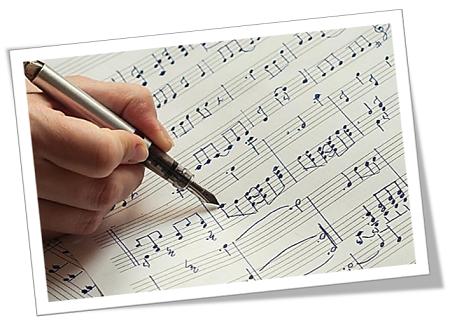
When modulating or transposing, the space of the semitones has to be the same. To give an example: when the major key runs from c to c (the c being the so-called finalis), it does not have either sharps or flats. But when the same key has been modulated to d, it has two sharps, namely f sharp and c sharp.
So when the Dorian mode runs from d to d, it does not have any sharp or flat. But when it is transposed to e, it has two sharps, namely f sharp and c sharp.
As far as the term hypo, is concerned, this has to do with the same mode, so that e.g. the finalis of the Dorian scale (without sharps or flats) is d and the finalis of the Hypodorian scale (without sharps or flats) is also d. But the meaning of Hypo is: below, or beneath. That means: this scale runs not from d to d (although the finalis is indeed d), but it runs from a to a.
It would go beyond the purpose of my articles if I worked out all the details in this respect. I just give these examples in order to show the great variety and the many possibilities in the church modes.
For more details I should like to refer the readers to the interesting study of Dennis Teitsma, Tunes of the Anglo-Genevan Psalter, 327 Pandora Avenue East, Winnipeg, MB, R2C OA3, 1980 (80 stencilled pages).
The so-called Gregorian phrase is composed of a flexible undulating line, a kind of sonorous thread which is sensitive to the smallest music waves. The Gregorian phrase is not static, not stiff, not sharply delineated. But the hymn, of course, has a different structure. In the hymn the architecture dominates, because of the stanzas which are composed in a strophical construction.
Background of Gregorian Chants←⤒🔗
So we see that the background of the church modes of the Psalm melodies in our Book of Praise is found in the Gregorian chants, and just as Em. Haein already proved more than sixty years ago, Bourgeois and "Maître Pierre" used all kinds of motives, firm melodic formulas and many other elements from the treasure of church music before reformation times.
But it is interesting to know also what the background is of the Gregorian chants. From more than one side it has been proved that they go back via Greece to the synagogue and even to the temple.
In an also extensive study, the famous Dutch musicologist Hélène Nolthenius who was a professor at the University of Utrecht from 1958 to 1976, pointed to the rich history of the Gregorian chants. Her book was called De oorsprong van het Gregoriaans and was published by Querido in 1981. She discovered in Italy that relief pictures on sarcophagus (stone tombs) had a close connection with melodical motives of Gregorian antiphones (responsorial chants). She also found out that the final form of Gregorian chants was actually Frankish. About the year 900, Metz in France was the centre of it. But the origins of the Gregorian chants are to be sought in the beginning of our era, about two thousand years ago, in the Jewish synagogues.
There were Jews from Yemen and also from other Asiatic countries who immigrated about sixty years ago to Israel. Their synagogical songs appeared to have exactly the same kind of Psalmody, the same music curves in their rises and falls as the Gregorian chants.
Temple and Synagogue←⤒🔗
As I already said before, there is also a connection between the way of singing in the synagogues and the way of singing before that, namely, in the temple.
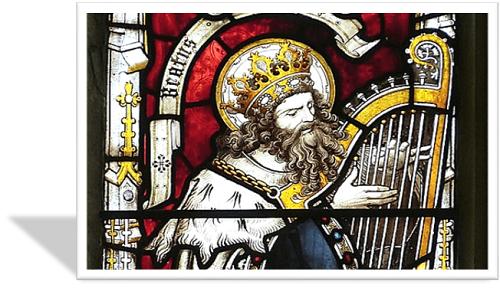
The question is: do we know anything of that way of singing, especially in the temple?
In this respect there is another very important study, namely of Suzanna Haik Vantoura, concerning "La Musique de la Bible révélée" (Paris, 1976).
Of course, it was not easy to find out in which way the people of Israel have sung their Psalms. But in our next and final article we will see that Suzanna Haik Vantoura developed a very interesting theory, which in a certain sense offers us the missing link in the long chain of church singing throughout the ages.
Biblical Signs←⤒🔗
I pointed to an important study concerning Biblical music, undertaken by the French scholar Suzanne Haik Vantoura. On the cover of a record (Harmonia Mundi 989), Sylviane Falcineili tells us that Vantoura especially scrutinized the relevant Biblical signs.
After trying out many hypotheses, deductions, and experiments, she discovered the key to that ancient notation, she revealed the significance of the musical signs and finally revived and transcribed in modern notation the music which was revealed to her following methodical deciphering and irrefutable verification, whereas the cantillation of the synagogue, varying (for the same text) from one country to another, could not claim any logical justification.
Vantoura worked on it for a long time. The result of these years of labour is an historical work which has convinced musicologists as well as Hebrew scholars, and the revelation of musical treasures which have already seduced the greatest composers. "Listening to this music," Falcineili says,
everyone will be made conscious once again that the history of the people of Israel is the cradle of our Western history … and of its musical language. Those musicians of long ago, travelling through various lands, absorbed their modes. These songs issuing from the foundation of the ages seem to be very contemporary. Astonishingly modern, too, is the answer found by Biblical musicians regarding the relationship between text and music. We notice first the expressive correlation between the texts and their melodic line, and then the economy of means used in this expression. This way of underlining the intentions of the text reconfirms the affiliation to Western music, for in some chants we recognize the poetic nuances (madrigalisms) of the composers of the 16th century. But between Biblical musicians and madrigalists there are numerous levels, notably Gregorian chant, of which we are in the process of discovering the Middle Eastern sources.
Synagogue and Temple←⤒🔗
So there is not only a close connection between the church modes of the Genevan Psalter and the Gregorian chant, but there is also the background of this chant, found in the synagogue singing. And in turn, this synagogue singing is not to be separated from the singing in the temple. Listening to a record like HMD 989, especially in respect of Psalm singing, makes this connection clear. There are also indications that the singing in the temple of David's times was based on the so-called Egyptian pentatonic scale, on which Moses is said to have composed and sung his old 90th Psalm.
Is it not remarkable that with regard to Psalm singing one can point to a long line extending throughout the history of the church?
Psalms and Hymns←⤒🔗
No wonder that not only musicians who are church members promoted the singing of the Psalms and praised the Genevan Psalter in respect of the melodies, but that also outsiders admired the great value of these melodies.
It is very important to know that there is a continuing line in Psalm singing in the church from days of old until today.
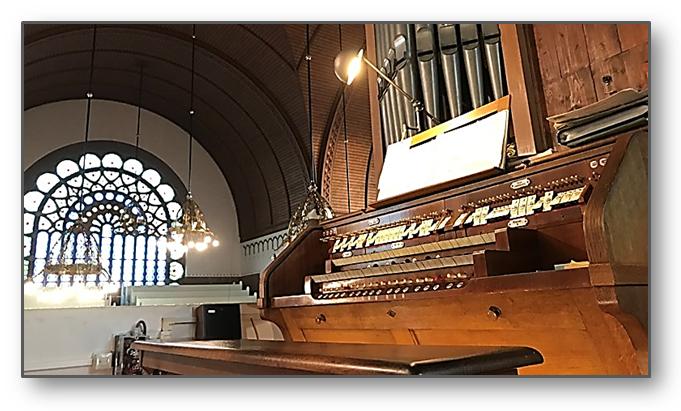
Therefore let us be careful not to abandon this heritage!
Sometimes there is a tendency to prefer the tunes of all kinds of hymns to the Psalm melodies. Then it is said: the tunes of the hymns are easier, they are played by ear, and especially the young people like that.
At the same time it is also said: the Psalm melodies are sometimes difficult to learn, you do not so soon get used to them, etc.
But I think that also has something to do with the relation between word and tone. In former days, when the Psalms were sung in a unitone way (although against the original tonality!) and when the rhyming version was not correct, there could indeed be a problem. But all that is improved now. It is therefore to be applauded that the Genevan melodies are more promoted than before. For instance in South Africa, there is the beautiful rhymed version of the poet Totius. Unfortunately, some Psalms are rhymed in a way in which the existing church modes cannot be sung. So the Psalter is more or less mixed up with church modes and other melodies. But now there is the attempt to make it possible that all Psalms are to be sung on church modes.
Let us Sing Psalms!←⤒🔗
To prevent misunderstandings: I do not want to say a bad word concerning hymns, especially not concerning the 65 Hymns of the Book of Praise of the Canadian Reformed Churches. I only stress that the singing of Hymns should not be promoted at the cost of singing Psalms.
A couple of years ago I was in South Korea, and the people of the church were used to singing all kinds of Hymns. When I delivered some guest lectures at the Theological Seminary at Pusan, I pointed also to the Psalm melodies. Then several students asked me, "Why do we not sing Psalms on these beautiful melodies?" And right away some students tried to make a start of it.
Sometimes it is asked just the other way around in the mission fields, especially by missionaries, "Why do we have to sing the Psalms to the Genevan tunes? Let the people sing in the church in the way they like and which they are used to, for instance using the tunes of popular songs." And one of the arguments is then: actually also the Psalms were sung in reformation times to popular tunes!
But since it is clear that this appeared to be wrong, let us not argue any more in this way.
I think the people in the mission fields must have their own rhymed version, in their own language. But let us be careful not to abandon the beautiful melodies of our Psalms too soon!
I want to stress also: let us sing Psalms and not only one or two stanzas of a Psalm. Of course, some Psalms are too long to sing as a whole. One always points to e.g. Psalm 119 with the many stanzas. But in that case there were also already from of old indications to sing a part of the Psalm, and many times that is forgotten. But if a Psalm is not that long, let the people sing the whole Psalm. Then they will also understand the better the contents of what they are singing.
I want to point also to the possibility of antiphonal singing, in which two parts of the people sing on turn. That was also done from of old! A clear example of that way of singing is Psalm 136: the burden or the chorus was sung by a part of the people, while the rest was sung by another part.
Do not say too soon: then you make a part of the congregation passive and silent. To hear is also a matter of being active and in your mind you are then still singing with the other part, just as you are praying with the minister, when he prays on behalf of the whole congregation.

Conclusion←⤒🔗
We may conclude at the end of these articles that the Psalm melodies of the Genevan Psalter were of undoubtedly high quality for congregational singing. The link of the Genevan melodies with the ancient church and via the synagogue with the Old Testament church has been established as proven fact, over against the so-called "contrafact theory" as if the Psalm melodies were only derived from street songs and "top-hits" of that time.
Thankful use of the Psalm melodies of the Genevan Psalter will mean a really ecumenical labour of love: we will be singing in communion with the saints of bygone ages.
In this respect it is now up to us to show our gratitude to the Lord of the church of all ages.
I will end with Calvin's words about congregational singing in his Institutes (vol. Ill, 20):
Certainly if singing is tempered to a gravity befitting the presence of God and angels, it both gives dignity and grace to sacred actions, and has a very powerful tendency to stir up the mind to true zeal and ardent prayer. We must, however, carefully beware, lest our ears be more intent on the music than our minds on the spiritual meaning of the words. And in the same context (32) he says: If this moderation is used, there cannot be a doubt that this practice is most sacred and salutary.

Add new comment